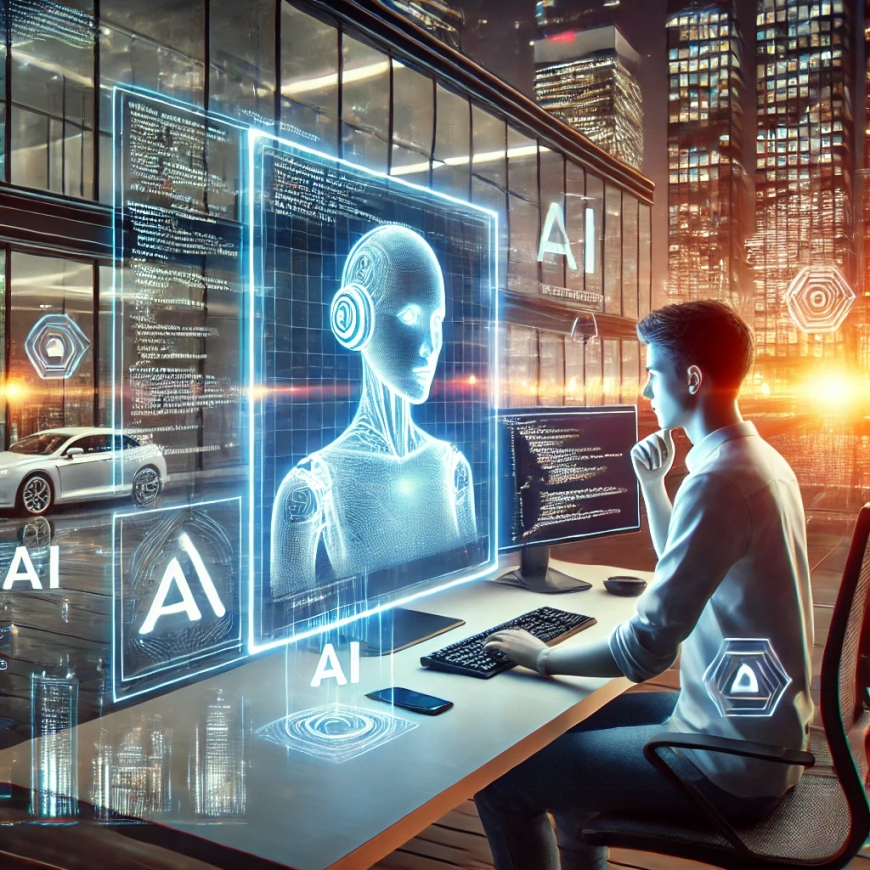Top 8 Sensational Chatbot Trends for 2025
Discover the top 8 chatbot trends for 2025, from AI-powered e-commerce bots to virtual companions and advanced customer experiences.

As we move into 2025, chatbots continue to transform the way businesses and individuals interact. AI-powered bots are evolving rapidly, taking on more advanced roles, and becoming integral parts of customer service, marketing, and even personal interaction. These bots are more than just automated responders; they now integrate complex algorithms and machine learning to provide highly personalized experiences. Here, we’ll explore eight sensational chatbot trends that are shaping the future in 2025 and beyond.
1. Hyper-Personalization in Chatbots
One of the most prominent trends in the chatbot industry for 2025 is hyper-personalization. In the past, chatbots were typically designed with generic responses to simple queries. However, the future of chatbot interactions is moving towards bots that provide personalized experiences based on individual user behavior, preferences, and past interactions.
These personalized chatbots use machine learning algorithms to analyze past conversations, purchase histories, and user profiles to predict what the user might need. Whether it’s recommending a product or offering targeted support, the bot is capable of adjusting its responses accordingly. For instance, if a user has interacted with a bot previously, the chatbot will reference past conversations, ensuring a seamless continuation of the interaction.
As a result, customers will expect a chatbot experience that feels increasingly human and tailored to their specific needs. The more personal and contextual the interaction, the more likely users will engage with the bot and feel satisfied with the service.
2. Integration of Natural Language Processing (NLP)
NLP has been a key technology for chatbots, but in 2025, we expect it to be more advanced than ever before. NLP allows chatbots to process and understand human language in a way that mimics real conversation. As NLP technology progresses, bots will be able to handle increasingly complex interactions, including understanding nuances like tone, humor, and emotions.
Unlike earlier versions of chatbots that could only follow predetermined scripts, chatbots in 2025 will analyze the context of conversations to provide meaningful responses. For businesses, this means that customer inquiries will be answered with greater accuracy, resulting in improved user experiences and higher satisfaction rates.
In particular, as NLP models advance, they will enable chatbots to deal with a wide variety of languages, dialects, and slang, making these bots more accessible to users around the globe. Consequently, companies will be able to reach a larger, more diverse audience, driving engagement in a more inclusive manner.
3. Multimodal Chatbots for a Richer Experience
Multimodal chatbots are another exciting trend for 2025. These bots combine various communication channels such as text, voice, video, and even images to enhance the user experience. Rather than just relying on written text or speech, multimodal chatbots will be able to use different forms of media to deliver richer, more dynamic interactions.
For instance, when a user asks about a product, the chatbot might not only respond with text but also show a video or image of the item in question. If the user is trying to troubleshoot an issue, the bot may guide them through a process with step-by-step visuals or even a voice assistant. This multimodal approach makes interactions feel more intuitive and engaging, which will be crucial in maintaining customer interest in an increasingly digital world.
As the technology improves, we can expect businesses to use multimodal chatbots to offer a wider range of services, from customer support to education and entertainment.
4. AI Chatbots in E-commerce and Retail
In 2025, AI chatbots will continue to make waves in the e-commerce and retail industries. They will be used not only for customer service but also for product recommendations, order tracking, and even guiding customers through the entire shopping journey.
For example, a chatbot might help a user find the right product by asking specific questions about their preferences, size, and style. It could then provide tailored suggestions based on the user’s previous purchases or browsing history. With the help of AI, these chatbots will have the ability to analyze data from multiple sources, including social media and external reviews, to make the most accurate recommendations possible.
Furthermore, chatbots will play a key role in reducing cart abandonment. By keeping customers engaged through personalized conversations and offering timely assistance during the checkout process, these bots will improve conversion rates for e-commerce businesses.
5. Virtual Companions and NSFW AI Chatbots
A less conventional but equally fascinating trend in 2025 will be the rise of virtual companions powered by AI chatbots. These bots will not only be designed for customer support or product recommendations, but will also offer personalized companionship for users who seek emotional support or even entertainment.
The development of an NSFW AI chatbot is an example of how this trend is expanding. These chatbots are designed to engage users in more intimate or personal conversations, catering to specific desires or needs. While this may raise ethical questions, the rise of virtual companions presents a unique shift in how we define relationships and emotional interactions in the digital space.
At the same time, businesses can also benefit from more human-like chatbot interactions. For example, brands in the adult entertainment industry may leverage NSFW AI chat bots for customer engagement, creating more interactive and personalized user experiences.
6. AI-Powered Chatbots for Mental Health Support
Another rapidly growing area for AI chatbots is mental health support. By 2025, chatbots will be more sophisticated in providing emotional and mental health assistance, from offering coping mechanisms for stress and anxiety to providing therapy-like support.
These chatbots will rely on advanced AI models to understand the user’s emotional state and tailor responses that are empathetic and supportive. While they cannot replace human therapists, they offer a low-cost and easily accessible way for people to receive help when needed. Mental health chatbots are already being implemented in some areas, and we expect their use to become more widespread as people seek immediate support in times of crisis.
In addition to offering comfort, these chatbots may also serve as a first step for people to assess their mental well-being, helping them identify areas where they need professional help.
7. Integration with the Metaverse
The Metaverse is expected to become a key platform for AI-driven interactions, and chatbots will play a central role in this transition. As virtual worlds become more immersive, chatbots will be integrated into the Metaverse to help guide users, provide support, and even facilitate commerce within these digital spaces.
For instance, a chatbot in the Metaverse could act as a personal assistant, helping users navigate virtual environments, locate resources, and engage with other users. These chatbots would be designed to recognize avatars, track user preferences, and assist with tasks related to virtual worlds, such as purchasing virtual goods or finding specific locations.
The integration of chatbots with the Metaverse will make interactions feel more real and seamless, further blurring the lines between physical and digital experiences.
8. AI Tools Directory for Developers
As chatbot technology continues to evolve, developers will need efficient resources to build, test, and deploy AI chatbots. In 2025, we’ll see a rise in AI tools directories that consolidate various resources for developers. These directories will include everything from pre-built AI models and APIs to chatbot design tools, making it easier for developers to create more powerful chatbots faster.
In comparison to today’s fragmented ecosystem, an AI tools directory will serve as a one-stop shop for all the resources developers need. This will be especially useful as more businesses seek to implement chatbots into their customer service, sales, and marketing strategies. By providing easy access to a range of tools and integrations, these directories will streamline the chatbot development process.
Conclusion
As we approach 2025, it’s clear that chatbot technology will continue to evolve at a rapid pace. These eight sensational trends provide a glimpse into the future, where chatbots will not only serve functional roles in business but will also provide more personalized, emotionally intelligent, and immersive experiences for users.
Whether businesses are looking to improve customer service or tap into new forms of engagement, the rise of these chatbot trends will play a key role in shaping the future of digital interactions.
What's Your Reaction?

























